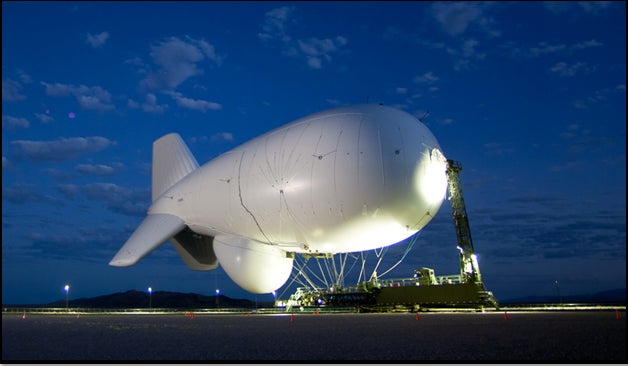The Army’s Runaway Blimp Escaped Due To…Dead Batteries
Batteries not included (apparently)

Making sure $3 billion doesn’t get up and walk away is harder than it sounds. Last October, the Army lost control of a $2.7 billion blimp and watched helplessly as it drifted from Maryland to rural Pennsylvania. On a particularly windy day, the Joint Land Attack Cruise Missile Defense Elevated Netted Sensor System (or JLENS, for short) escaped its tether and went on a wild chase.
The culprit? Dead batteries in the auto-deflation device, according to a new report from the LA Times.
The failed batteries were the last in a chain of failures, from a malfunctioning air pressure sensor to the strong nearly 70mph winds that bent the JLENS’ floating, blimp-like body out of shape. Normally, when this happens, the tethered blimp is supposed to deflate so doesn’t, say, get lost in Amish country. Instead, as the LA Times reports:
As designed, JLENS is meant to protect the Washington, DC area from attack by spotting incoming missiles. When the weather isn’t bad, and when the system works properly, it can stay aloft for 20 to 30 days in a row, with continuous protect provided by rotating in tethered blimps. The key to protecting America from assault, it seems, is simply batteries.
